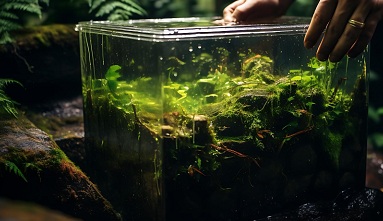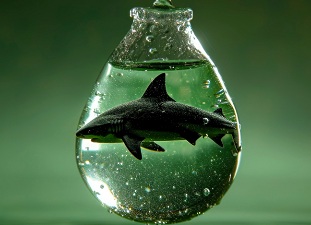Keeping a fish tank is an exciting hobby, but maintaining the right water conditions is crucial for the health and well-being of your aquatic pets. One of the key parameters to monitor is alkalinity. High alkalinity levels can lead to various issues, including stress and even death in fish. In this comprehensive guide, we’ll delve into the intricacies of lowering alkalinity in your fish tank, ensuring a thriving environment for your underwater friends.
Understanding Alkalinity
Before we jump into the methods of lowering alkalinity, let’s first understand what alkalinity is and why it’s important. Alkalinity refers to the buffering capacity of water, or its ability to resist changes in pH. It’s primarily composed of bicarbonate, carbonate, and hydroxide ions. In a fish tank, alkalinity helps maintain a stable pH level, which is essential for the health of aquatic life.
Testing Alkalinity Levels
The first step in managing alkalinity is to test the water regularly. You can use aquarium test kits readily available in pet stores or online. These kits typically measure alkalinity in degrees of carbonate hardness (dKH) or parts per million (ppm). Aim for an alkalinity level between 100-200 ppm for most freshwater aquariums.
Methods to Lower Alkalinity
1. Partial Water Changes

The simplest method to reduce alkalinity is through partial water changes. By replacing a portion of the water in your tank with fresh, deionized water, you dilute the alkalinity along with other dissolved minerals. Aim to replace around 25% of the water weekly to maintain stable water parameters.
2. Using Peat Moss

Peat moss is a natural substance that can effectively lower alkalinity in aquarium water. Place a small amount of peat moss in a mesh bag or filter media bag and add it to your filter. As water passes through the peat moss, it releases tannins and organic acids, which help neutralize alkalinity.
3. Adding Driftwood

Driftwood not only adds aesthetic appeal to your aquarium but can also aid in lowering alkalinity. Like peat moss, driftwood releases tannins into the water, which have acidifying properties. Choose dense, hardwood driftwood and soak it in water for a few days before adding it to your tank to prevent it from floating.
4. Incorporating RO Water

Reverse osmosis (RO) water is devoid of minerals and has very low alkalinity. Mixing RO water with tap water can help lower the overall alkalinity of your aquarium. However, it’s essential to monitor the pH and alkalinity levels closely when using RO water, as it can lead to rapid fluctuations in water chemistry.
5. Utilizing Chemical Additives

There are various commercial products available specifically designed to lower alkalinity in aquariums. These additives typically contain phosphoric acid or citric acid and can be added directly to the water according to the manufacturer’s instructions. Exercise caution when using chemical additives and always follow dosing guidelines carefully.
Monitoring and Maintenance
After implementing any of the above methods, it’s crucial to monitor the alkalinity levels regularly to ensure they remain within the desired range. Additionally, maintaining a stable pH is essential for the overall health of your fish. Consider investing in a quality pH monitor to keep track of pH fluctuations and address any issues promptly.
FAQs (Frequently Asked Questions) about Lower Alkalinity in Fish Tank
It’s recommended to test alkalinity weekly, especially if you notice any signs of imbalance or after significant changes in the tank environment.
Yes, high alkalinity can stress or even harm fish, leading to health issues and decreased vitality if not addressed promptly.
Yes, many commercial products are safe and effective when used according to the manufacturer’s instructions. However, it’s essential to research and choose products suitable for your specific tank setup and inhabitants.
If alkalinity levels persistently remain high, despite your efforts to lower them, consider seeking advice from experienced aquarists or consulting with a professional to identify any underlying issues.
Yes, incorporating natural elements such as peat moss or driftwood can help lower alkalinity over time. Additionally, utilizing reverse osmosis water can reduce alkalinity levels effectively.
Conclusion
Maintaining optimal water parameters, including alkalinity, is paramount for the health and well-being of your aquarium inhabitants. By understanding the factors influencing alkalinity and implementing appropriate measures, you can create a stable and thriving aquatic environment for your fish to flourish.

